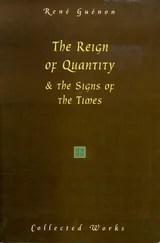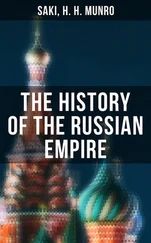[27] Gaillard, Rivalité, tom. iii. pp. 290, 292.—Carbajal, Anales, MS., año 76.
[28] Bernaldez, Reyes Católicos, MS., cap. 27.—Pulgar, Reyes Católicos, cap. 56, 57.—Gaillard, Rivalité, tom. iii. pp. 290–292.—Zurita, Anales, lib. 19, cap. 56, lib. 20, cap. 10.—Ruy de Pina, Chrón. d'el Rey Alfonso V., cap. 194–202.—Faria y Sousa, Europa Portuguesa, tom. ii. pp. 412- 415.—Comines, Mémoires, liv. 5, chap. 7.
[29] According to Faria y Sousa, John was walking along the shores of the Tagus, with the duke of Braganza, and the cardinal archbishop of Lisbon, when he received the unexpected tidings of his father's return to Portugal. On his inquiring of his attendants how he should receive him, "How but as your king and father!" was the reply; at which John, knitting his brows together, skimmed a stone, which he held in his hand, with much violence across the water. The cardinal, observing this, whispered to the duke of Braganza, "I will take good care that that stone does not rebound on me." Soon after, he left Portugal for Rome, where he fixed his residence. The duke lost his life on the scaffold for imputed treason soon after John's accession.—Europa Portuguesa, tom. ii. p. 416.
[30] Comines, Mémoires, liv. 5, chap. 7.—Faria y Sousa, Europa Portuguesa, tom. ii. p. 116.—Zurita, Anales, lib. 20, cap. 25.— Bernaldez, Reyes Católicos, MS., cap. 27.
[31] This was the first meeting between father and son since the elevation of the latter to the Castilian throne. King John would not allow Ferdinand to kiss his hand; he chose to walk on his left; he attended him to his quarters, and, in short, during the whole twenty days of their conference manifested towards his son all the deference, which, as a parent, he was entitled to receive from him. This he did on the ground that Ferdinand, as king of Castile, represented the elder branch of Trastamara, while he represented only the younger. It will not be easy to meet with an instance of more punctilious etiquette, even in Spanish history.—Pulgar, Reyes Católicos, cap. 75.
[32] Salazar de Mendoza, Crón. del Gran Cardenal, p. 162.—Zurita, Anales, lib. 20, cap. 25.—Carbajal, Anales, MS., año 79.
[33] Ruy de Pina, Chrón. d'el Rey Alfonso V., cap. 206.—L. Marineo, Cosas Memorables, fol. 166, 167.—Pulgar, Reyes Católicos, cap. 85, 89, 90.— Faria y Sousa, Europa Portuguesa, tom. ii. pp. 420, 421.—Ferreras, Hist. d'Espagne, tom. vii. p. 538.—Carbajal, Anales, MS., año 79.—Bernaldez, Reyes Católicos, MS., cap. 28, 36, 37.
[34] Born the preceding year, June 28th, 1478. Carbajal, Anales, MS., anno eodem.
[35] L. Marineo, Cosas Memorables, fol. 168.—Pulgar, Reyes Católicos, cap. 91.—Faria y Sousa, Europa Portuguesa, tom. ii. pp. 420, 421.—Ruy de Pina, Chrón. d'el Rey Alfonso V., cap. 206.
[36] Ruy de Pina, Chrón. d'el Rey Alfonso V., cap. 20.—Faria y Sousa, Europa Portuguesa, tom. ii. p. 421.—Pulgar, Reyes Católicos, cap. 92.—L. Marineo speaks of the Señora muy excelente , as an inmate of the cloister at the period in which he was writing, 1522, (fol. 168.) Notwithstanding her "irrevocable vows," however, Joanna several times quitted the monastery, and maintained a royal state under the protection of the Portuguese monarchs, who occasionally threatened to revive her dormant claims to the prejudice of the Castilian sovereigns. She may be said, consequently, to have formed the pivot, on which turned, during her whole life, the diplomatic relations between the courts of Castile and Portugal, and to have been a principal cause of those frequent intermarriages between the royal families of the two countries, by which Ferdinand and Isabella hoped to detach the Portuguese crown from her interests. Joanna affected a royal style and magnificence, and subscribed herself "I the Queen," to the last. She died in the palace at Lisbon, in 1530, in the 69th year of her age, having survived most of her ancient friends, suitors, and competitors.—Joanna's history, subsequent to her taking the veil, has been collected, with his usual precision, by Señor Clemencin, Mem. de la Acad. de Hist., tom. vi. Ilust. 19.
[37] Faria y Sousa, Europa Portuguesa, tom. ii. p. 423.—Ruy de Pina, Chrón. d'el Rey Alfonso V., cap. 212.
[38] Carbajal, Anales, MS., año 79.—Bernaldez, Reyes Católicos, MS., cap. 42.—Mariana, Hist. de España, (ed Valencia,) tom. viii. p. 204, not.— Abarca, Reyes de Aragon, tom. ii. fol. 295.
CHAPTER VI.
INTERNAL ADMINISTRATION OF CASTILE.
Table of Contents
1475–1482.
Schemes of Reform.—Holy Brotherhood.—Tumult at Segovia.—The Queen's Presence of Mind.—Severe Execution of Justice.—Royal Progress through Andalusia.—Reorganization of the Tribunals.—Castilian Jurisprudence.— Plans for Reducing the Nobles.—Revocation of Grants.—Military Orders of Castile.—Masterships annexed to the Crown.—Ecclesiastical Usurpations Resisted.—Restoration of Trade.—Prosperity of the Kingdom.
I have deferred to the present chapter a consideration of the important changes introduced into the interior administration of Castile after the accession of Isabella, in order to present a connected and comprehensive view of them to the reader, without interrupting the progress of the military narrative. The subject may afford an agreeable relief to the dreary details of blood and battle, with which we have been so long occupied, and which were rapidly converting the garden of Europe into a wilderness. Such details indeed seem to have the deepest interest for contemporary writers; but the eye of posterity, unclouded by personal interest or passion, turns with satisfaction from them to those cultivated arts, which can make the wilderness to blossom as the rose.
If there be any being on earth, that may be permitted to remind us of the Deity himself, it is the ruler of a mighty empire, who employs the high powers intrusted to him exclusively for the benefit of his people; who, endowed with intellectual gifts corresponding with his station, in an age of comparative barbarism, endeavors to impart to his land the light of civilization which illumines his own bosom, and to create from the elements of discord the beautiful fabric of social order. Such was Isabella; and such the age in which she lived. And fortunate was it for Spain that her sceptre, at this crisis, was swayed by a sovereign possessed of sufficient wisdom to devise, and energy to execute, the most salutary schemes of reform, and thus to infuse a new principle of vitality into a government fast sinking into premature decrepitude.
The whole plan of reform introduced into the government by Ferdinand and Isabella, or more properly by the latter, to whom the internal administration of Castile was principally referred, was not fully unfolded until the completion of her reign. But the most important modifications were adopted previously to the war of Granada in 1482. These may be embraced under the following heads. I. The efficient administration of justice. II. The codification of the laws. III. The depression of the nobles. IV. The vindication of ecclesiastical rights belonging to the crown from the usurpation of the papal see. V. The regulation of trade. VI. The pre-eminence of royal authority,
I. The administration of justice. In the dismal anarchy, which prevailed in Henry the Fourth's reign, the authority of the monarch and of the royal judges had fallen into such contempt, that the law was entirely without force. The cities afforded no better protection than the open country. Every man's hand seemed to be lifted against his neighbor. Property was plundered; persons were violated; the most holy sanctuaries profaned; and the numerous fortresses scattered throughout the country, instead of sheltering the weak, converted into dens of robbers. [1] Isabella saw no better way of checking tins unbounded license, than to direct against it that popular engine, the Santa Hermandad , or Holy Brotherhood, which had more than once shaken the Castilian monarchs on their throne.
Читать дальше












